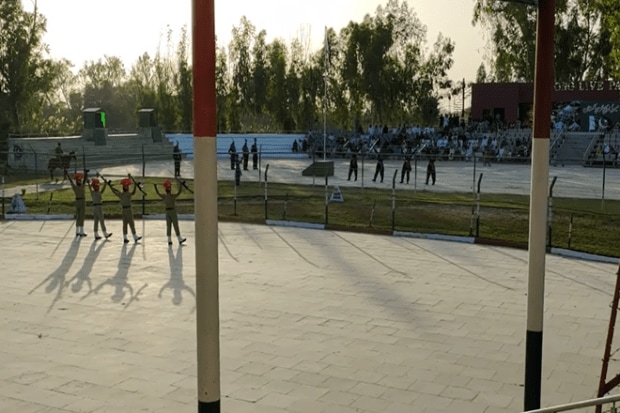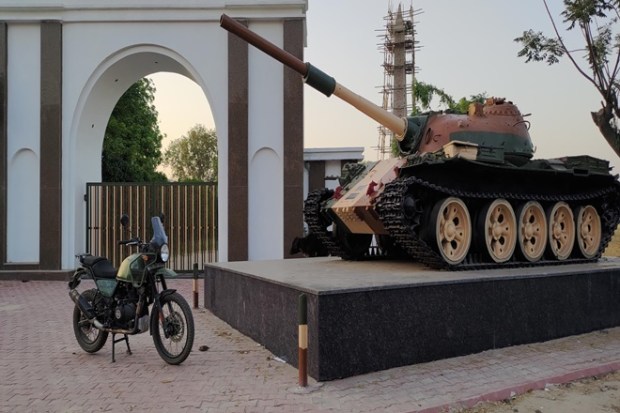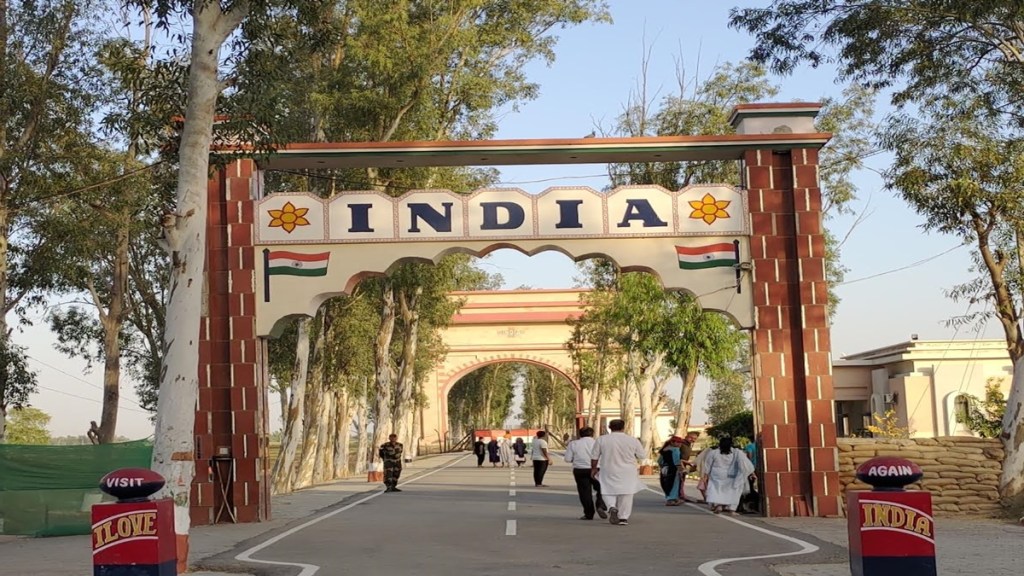Thanks to the film industry – and now Instagram Reels and YouTube Shorts – a lot of people may have seen the pantomime aggression displayed by Indian Border Security Force (BSF) jawans and Pakistani Rangers every evening at the Wagah-Attari border, 30 km from Amritsar, in Punjab.
At 4.15 pm in winters and 5.15 pm in summers, these border guards – while lowering their respective national flags – take part in a 45-minute parade that appears ferocious to some and patriotic to others. Wearing large turbans, shiny boots and oiled moustaches, the BSF jawans and Pakistani rangers lift their legs high, kick in the air, and slam their heels on the ground – over and over again – in a display of power and aggression.

Watching it in-person is an experience, but not easy – while there is no ticket, seats are limited and on a first-come, first-served basis. You may not get the best seats, either – so big is the crowd, always. Authorities suggest arriving 2-3 hours early for the parade.
Where else to watch?
While Wagah border is about 500 km from Delhi (10 hours by road), there are two more places where a similar ceremony is held – Hussainiwala/Ganda Singh Wala border near Firozpur (450 km from Delhi) and the Sadqi-Sulemanki border near Fazilka (420 km), both in Punjab.
How to reach Sadqi?
Thanks to the well-paved NH9 from Delhi, we took just seven hours to cover 420 km. The journey was quick thanks to the comfortable Royal Enfield Himalayan that we picked up for the trip.
What to expect at Sadqi?
The same pomp and pageantry, minus the crowd.
At Wagah, the crowd can be a 1,000-person strong, or more. At Hussainiwala, on some days 400-500 persons visit the border. But at Sadqi, it barely crosses 100 persons. Another positive about Sadqi is that BSF guards are more accessible (as they don’t have to reason with hundreds of tourists every day).
Significance of the ceremony
A BSF officer told FE that these parades are a show of power and friendship. “It is as much a show of rivalry as of brotherhood,” the officer said. “Both sides choose their best men, and they are trained specifically for the parade. Both sides try to outdo each other. That’s competitive spirit.”
What else to see?
That’s where Sadqi can disappoint some tourists, because apart from the border ceremony and the nearby Asafwala War Memorial (in the remembrance of the martyrs of the 1971 Indo-Pak War), there is not much to see around Fazilka (the nearest city) and not many upscale hotels to stay.
Amritsar, on the other hand, has the Golden Temple, Jallianwala Bagh, Maharaja Ranjit Singh Museum, Partition Museum, Ram Bagh (Company Bagh), and so on.
But what Fazilka cannot offer in terms of tourist places, it does by way of sheer tranquillity – wide open fields and traffic-free highways.
How is the motorcycle?
Long rides can make you understand your machine much better than a city commute can. During this almost 1,000-km long road trip, I got to know the strengths and the shortcomings of the Himalayan.
Strengths
– Its 411cc engine (24.3 bhp, 32 Nm) ensures smooth 0-60 km/h acceleration. But the Himalayan gets into its element from 40-100 km/h, making overtaking long vehicles effortless.
– It’s a tall motorcycle, so straddling it may not be easy for everybody. But on the move, it’s like a toy. For this long ride, I secured my bag with bungee ropes on the rear seat (there are enough points to secure bungee hooks).
– On this 1,000-km trip, it consumed about 24 litres of fuel (efficiency of 42 km/litre).
Shortcomings
– At over 190 kg, the Himalayan is heavy, and if you get stuck in sand or urban traffic where you have to put your feet down, it can tire you.
– The power produced by the engine is ample, but some times you do feel powerless, especially when a smaller KTM overtakes you.
– The thermometer on the trip computer shows incorrect ambient temperature (the sensor is located near the engine and takes up some heat from there).

The all-new Himalayan
Royal Enfield is reading the all-new Himalayan that will be launched later this year or next. It has a bigger 450cc engine, and a lot of improvements are expected.
Lesser-known fact
Once upon a time, Fazilka used to be a major wool and trading centre, so important that the British-India Steam Navigation Company named one of its largest ships as SS Fazilka – SS is an acronym for steamship. SS Fazilka was launched in 1890 and carried troops from India to South Africa during the Boer War. She was wrecked in 1919 near Great Nicobar, while on a voyage from Penang to Calcutta.
